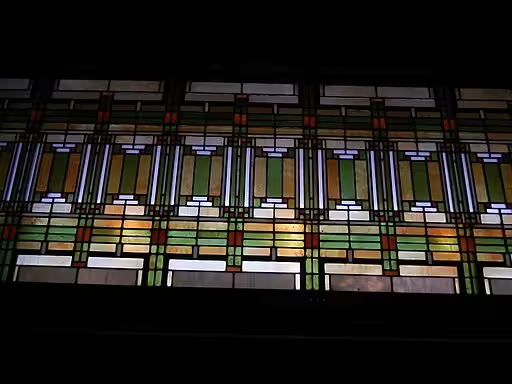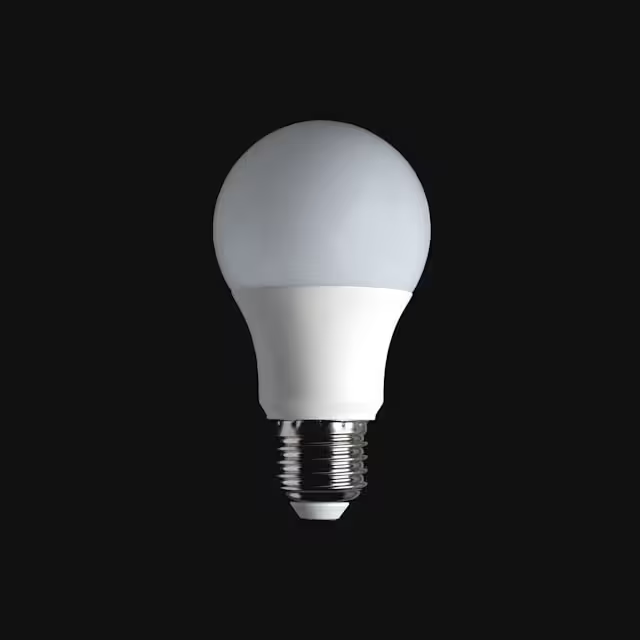The Living Dialogue Between Light and Shadow

There is a unique quality to the light here in Titusville, PA, as a Wednesday afternoon in early August matures towards 5 o’clock. It is no longer the sharp, direct light of midday, but something heavier, more golden. Filtering through the dense canopy of the Allegheny hardwoods, it loses its uniformity and becomes alive. It dapples the forest floor in a shifting mosaic, painting the ferns and fallen leaves in patterns that are never the same from one moment to the next.
This living dialogue between light and shadow is not a static image; it is a temporal, biological signal—a silent language that communicates the time of day, the depth of the season, and the subtle stirrings of the breeze. It is a feeling of being part of something ancient and deeply soothing.
This natural and etheral experience is the essence of what we seek to capture in biophilic design. We will move beyond the engineer’s concern for mere illumination—for lux levels and lumens—and explore light as a medium for connection. This article deconstructs “Light and Shadow,” one of the most powerful of the 14 patterns of biophilic design as defined by Terrapin Bright Green. Our objective is to provide a framework for understanding and applying these natural dynamics, demonstrating how the quality, texture, and movement of light can be strategically orchestrated in our architecture, our interiors, and even our digital spaces to foster well-being.
The deliberate and strategic use of varying light intensities, diffused light, and dynamic shadows is therefore not a decorative choice; it is a critical design technique that satisfies a fundamental human need for information-rich, naturalistic environments. We will explore how to harness this vital force, transforming spaces from sterile containers into places that feel restorative, engaging, and alive.
Table of Contents
The Psychophysiology of Light: Circadian Rhythms and Prospect-Refuge
To effectively wield light and shadow, one must first understand why they hold such power over our biology and psyche. Our relationship with light is not merely visual; it is a deeply embedded, physiological contract written into our DNA over millennia of evolution under a dynamic sky. Static, unchanging environments are, from a biological standpoint, unnatural and deeply unsettling.
The most critical mechanism is the circadian rhythm, our master 24-hour biological clock. This internal pacemaker, located in a region of the brain known as the suprachiasmatic nucleus (SCN), is synchronized primarily by the light signals received by our eyes. Specialized photoreceptors called intrinsically photosensitive retinal ganglion cells (ipRGCs) are particularly sensitive to the blue-wavelength light prevalent in morning and midday sun.
This light signal tells the SCN to suppress melatonin production, promoting alertness and cognitive function. As the sun sets, the light becomes warmer and dimmer, signaling the SCN to allow melatonin levels to rise, preparing the body for sleep.1 The ubiquitous, unchanging, blue-biased fluorescent or LED light of a standard office effectively jams this signal, contributing to sleep disorders, mood disturbances, and reduced productivity. A biophilic approach, therefore, must present a light environment that changes in intensity and color temperature throughout the day, reinforcing our natural rhythm.2
Furthermore, dynamic light provides crucial information richness. A uniformly lit room is an information-poor environment. It tells us nothing about the time of day, the weather outside, or the passage of time. Our brains, hardwired to seek and process information, can become under-stimulated, leading to boredom and fatigue. The subtle flicker of leaves, the slow crawl of a sunbeam across a wall, the shifting tones of twilight—these are all data points that keep our minds gently engaged with our surroundings, fostering a state of relaxed awareness.
Finally, the interplay of light and shadow is the primary architect of Prospect-Refuge Theory. First proposed by the geographer Jay Appleton, this theory posits that we are innately drawn to environments that offer both prospect (an unimpeded view of our surroundings) and refuge (a place of concealment and protection). A brightly lit, open space offers prospect, satisfying our need to survey and understand our environment. A shadowed alcove, a space under a low ceiling, or a seat by a sheltering wall provides refuge. Spaces that successfully incorporate both—for example, a seating area in a slightly dimmer part of a room that looks out through a large, bright window—are perceived as being profoundly safe and desirable.
Maximizing Direct Connection: Architectural Strategies for Natural Light

The most potent biophilic strategy is the direct and unfiltered connection to nature. For light and shadow, this means designing buildings as receptors, oriented and shaped to welcome and channel daylight deep into their cores.
Building Orientation is the first and most critical decision. In the Northern Hemisphere, orienting a building’s primary axis from east to west maximizes the surface area facing south. This southern exposure receives the most consistent, high-quality daylight throughout the day and year, without the harsh glare and heat gain associated with direct eastern (morning) or western (afternoon) sun. This simple, passive design choice is the foundation upon which all other daylighting strategies are built.
Glazing and Fenestration must be approached with surgical precision, not brute force. A “wall of glass” is not inherently biophilic if it creates overwhelming glare and heat. The strategy is to place windows thoughtfully to achieve specific goals.3
Clerestory windows, which were used by Frank Lloyd Wright, are set high in a wall above eye level, are brilliant tools for bringing light deep into a building’s core, illuminating the ceiling plane and providing balanced, diffuse light without compromising privacy or creating direct glare. Ribbon windows, long horizontal strips, can frame panoramic landscape views, emphasizing the horizon and creating a sense of expansiveness. Picture windows should be placed not arbitrarily, but to frame a specific, desirable view—a mature tree, a distant hill, or a patch of sky—treating the window as a living piece of art.
Centralized Light Sources like atriums, courtyards, and light wells are powerful architectural elements that mimic a clearing in the woods. They function as the building’s lungs, drawing light and air into the center. An atrium creates a stunning, communal focal point, a shared connection to the sky for all inhabitants. It allows light to spill into adjacent, otherwise windowless interior spaces, ensuring that no part of the building feels entirely disconnected from the outside world.
The Art of a Broken Ray: Simulating the Forest Canopy Effect

While direct sunlight is vital, it is often the filtered light that creates the most magical and restorative effects. The goal is to simulate the experience of standing under a tree canopy, where direct sun is broken into a complex, moving pattern of light and shade. This “dappled light” effect reduces glare, adds visual complexity, and creates a profoundly calming atmosphere.
This can be achieved through a variety of architectural interventions that act as filters.4 Pergolas and trellises are perhaps the simplest examples. These open-roofed structures, especially when covered with climbing vegetation like wisteria or grapevines, become living filters, casting intricate shadows that shift with the sun and wind.
Brise-soleil, a feature famously employed by the modernist architect Le Corbusier, is a permanent screen or set of louvers on a building’s exterior. It is precisely angled to block the high-angle summer sun, preventing overheating, while allowing the low-angle winter sun to pass through, providing passive heating. In doing so, it casts rhythmic, linear shadows across the building’s facade and interior floors, creating a strong visual connection to the sun’s path.
More intricate patterns can be created with mashrabiya or other forms of architectural latticework. These screens, rooted in traditional Islamic architecture, break sunlight into tiny, geometric points of light, creating stunningly beautiful interior environments that are bright yet private and free of glare. On a material level, texture itself can be a tool for crafting shadows.
The work of Japanese architect Tadao Ando is a masterclass in this principle. He often uses board-formed concrete, where the imprint of the wooden planks used for the mold is left on the finished surface. These subtle ridges and lines catch the light at varying angles, creating micro-shadows that give the massive concrete walls a surprising softness and tactile quality, their appearance changing dramatically throughout the day.
When Natural Light is Limited: Artificial Light as a Biophilic Tool

In dense urban environments, deep-plan buildings, or climates with limited sunny days, a total reliance on natural light is impossible. However, artificial lighting can be designed to act as a proxy for nature, simulating its most beneficial qualities.
The most advanced solution is a biodynamic or circadian lighting system. These are not simple dimmers. They are sophisticated systems of tunable white LED fixtures connected to a controller that automatically adjusts both the intensity (brightness) and the correlated color temperature (CCT) of the light throughout the day.5 The system will produce a bright, high-CCT (blue-rich, ~5000K) light mid-day to promote alertness, then gradually dim and warm the light (low-CCT, amber-rich, ~2700K) in the late afternoon and evening to align with our natural circadian rhythm and allow for melatonin production. This is the most direct way to use technology to support our innate biological cycles.
Beyond automated systems, the principle of layered lighting can create a more naturalistic and comfortable environment. This involves abandoning the single, overhead fluorescent panel in favor of three distinct layers:
- Ambient Layer: This is the base layer of indirect, diffuse light that provides general illumination. It can be achieved with cove lighting, uplighting fixtures that bounce light off a white ceiling, or pendant fixtures that cast a soft glow. The goal is to mimic the gentle, even light of an overcast sky.
- Task Layer: This is focused, directional light for specific activities like reading or working. Desk lamps, under-cabinet kitchen lights, and reading lights by a chair are examples. This allows for high levels of brightness where needed, without having to flood the entire room with intense light.
- Accent Layer: This is the “dappled light” of the artificial world. It involves using narrow-beam spotlights to highlight architectural features, artwork, or, most effectively, houseplants. Aiming a small spotlight at a large plant will cast complex, organic shadows onto an adjacent wall, creating the visual interest and information richness our brains crave.
Interior Applications: Bringing Dynamic Light Indoors
Even without major renovations or complex lighting systems, the principles of biophilic light and shadow can be applied within any existing space using thoughtful interior design choices.
Material selection is key. The choice between a reflective and a matte surface is a choice about how you want light to behave. A high-gloss floor, a polished marble countertop, or a large mirror will bounce light around the room, increasing brightness and creating a sense of energy.6 They are excellent tools for amplifying limited natural light in a dark room.7 Conversely, matte surfaces—a natural jute rug, a linen sofa, unpolished wood—absorb light, reducing glare and creating a softer, calmer atmosphere of refuge. A successful room often balances both.
Vegetation is a designer’s best friend for creating dynamic shadows. Place a large plant with complex foliage, like a Fiddle Leaf Fig (Ficus lyrata) or a Swiss Cheese Plant (Monstera deliciosa), in a spot where it will be hit by direct sun from a window or an artificial spotlight. The resulting shadows cast on the floor and walls will be organic, intricate, and will move subtly throughout the day, adding a layer of life to the room.
Translucent materials act as diffusers. Replacing a solid door with one of frosted glass or installing a Japanese-style shoji screen allows light to pass through while obscuring the source, reducing glare and creating a soft, ethereal glow. Sheer, lightweight curtains are a simple but highly effective tool. They can be drawn to cut the harshness of direct midday sun while still allowing the room to be filled with bright, diffuse light, maintaining a connection to the daylight cycle.
Digital Biophilia: Light and Shadow in User Experience (UX) Design

As our lives migrate into digital spaces, the principles of biophilic design remain critically relevant. A user interface is an environment, and it can be designed to be either stressful and fatiguing or calming and intuitive. Light and shadow are primary tools for achieving the latter.
In modern web and application design (using CSS, for example), the box-shadow property is a powerful tool for creating a sense of depth and hierarchy. Early digital shadows were often hard, black, and artificial. A biophilic approach uses diffuse, multi-layered shadows to mimic reality.8 A subtle shadow like box-shadow: 0 15px 35px rgba(0, 0, 0, 0.1); lifts an element off the page, clearly signaling that it is interactive (a button, a card, a pop-up modal) in a way that feels natural and non-threatening.
Gradients can be used to simulate the natural skyscape and prevent the visual fatigue of a stark, flat background. A nearly imperceptible gradient, such as background: linear-gradient(to bottom, #fafafa, #ffffff);, is far easier on the eyes over long periods than a solid white. It mimics the natural gradation of light in the environment, making the digital space feel less artificial and more expansive.
Finally, micro-interactions can use light to make an interface feel alive. A button that, when hovered over, subtly brightens or has its shadow expand provides immediate, satisfying feedback. The soft “frosted glass” blur effect used in operating systems like Apple’s macOS creates a sense of layered depth, as if you are looking through a translucent plane to the content behind it. These are all digital simulations of real-world light physics, and they work because they tap into our innate understanding of how a natural environment should look and feel.
Case Studies: Masterful Use of Light and Shadow

Theory is best understood through application. Several masterworks of design stand as exemplars of biophilic light.
The Salk Institute for Biological Studies in La Jolla, California, designed by architect Louis Kahn, is a pilgrimage site for students of light. Kahn brilliantly oriented the two main laboratory blocks to frame a central travertine plaza that points directly to the Pacific Ocean. A narrow water channel runs down the center of this plaza. The entire composition is calibrated so that on the spring and fall equinoxes, the setting sun aligns perfectly with this channel, creating a breathtaking “river of light” that bisects the space. It is a monumental gesture that connects the daily life of the scientists to the grand, celestial rhythms of the solar system.
In the corporate world, The EDGE in Amsterdam, designed by PLP Architecture, is a pinnacle of modern biophilic and sustainable design.9 Its entire south-facing facade is a massive glass atrium that floods the interior with natural light. Sophisticated sensors monitor light levels, temperature, and occupancy, and a smart LED lighting system connected to employee smartphones allows them to tune the light at their individual workstations to their preference, while still following a building-wide circadian program.
In digital design, Apple’s operating systems are a consistent case study. Their widespread use of translucency, blur effects, and soft, physics-based animations creates an interface that feels layered and tangible. Dynamic wallpapers change their lighting to match the time of day. The user experience is defined by a subtle adherence to the principles of natural light, creating an environment that feels intuitive and clean.
The Pitfalls of Poorly Managed Light
A biophilic approach is not simply about maximizing light; it is about managing it intelligently. Poorly managed light can lead to significant problems that undermine the well-being of inhabitants.10
Glare is the most common issue. This occurs when a light source or its reflection is significantly brighter than its surroundings, causing visual discomfort or even disability. Direct sunlight on a computer screen creates “veiling reflections” that wash out the image, while a bare, bright light bulb in one’s field of view creates “discomfort glare.” Both cause eye strain, headaches, and fatigue. The solution lies in control: light shelves that bounce direct sun onto the ceiling for diffuse light, properly angled louvers, or simple window shades are essential tools for managing and taming raw sunlight.
Thermal Discomfort is the twin problem of glare. A massive, unshaded, south- or west-facing window can create an intense greenhouse effect, dramatically overheating a space and leading to immense energy costs for air conditioning. A truly biophilic—and sustainable—approach requires passive design strategies like exterior shading, operable windows for natural ventilation, and the use of high-performance glazing with appropriate Solar Heat Gain Coefficients (SHGC).
Finally, Light Pollution is a critical consideration for exterior lighting. Irresponsible, upward-facing exterior lights contribute to skyglow, which disrupts nocturnal ecosystems (especially for migratory birds and insects) and severs our own visual connection to the stars. Responsible biophilic design uses full-cutoff fixtures that direct light only where it is needed—downward—and utilizes timers or motion sensors to ensure light is only on when necessary.
In Conclusion: Designing with Light is Designing for Life
Light and shadow are not decorative afterthoughts to be applied at the end of the design process. They are foundational, functional elements that dictate our physiological responses, our psychological comfort, and our connection to the world outside our walls. They are the primary medium through which a static building becomes a dynamic, living environment.
The core lesson is this: by consciously observing and orchestrating light to mimic the dynamic, information-rich, and life-sustaining patterns found in nature, we can design spaces that actively support our biological and mental health. Whether we are shaping a sunbeam with a window, casting a shadow with a plant, or coding a gradient into a user interface, the goal is the same: to satisfy an ancient, unmet need for natural connection.
To treat light merely as illumination is to ignore its most vital function. Light is a nutrient. A well-designed space does not just contain light; it breathes with it, connecting its inhabitants to the fundamental, life-sustaining rhythms of the natural world.